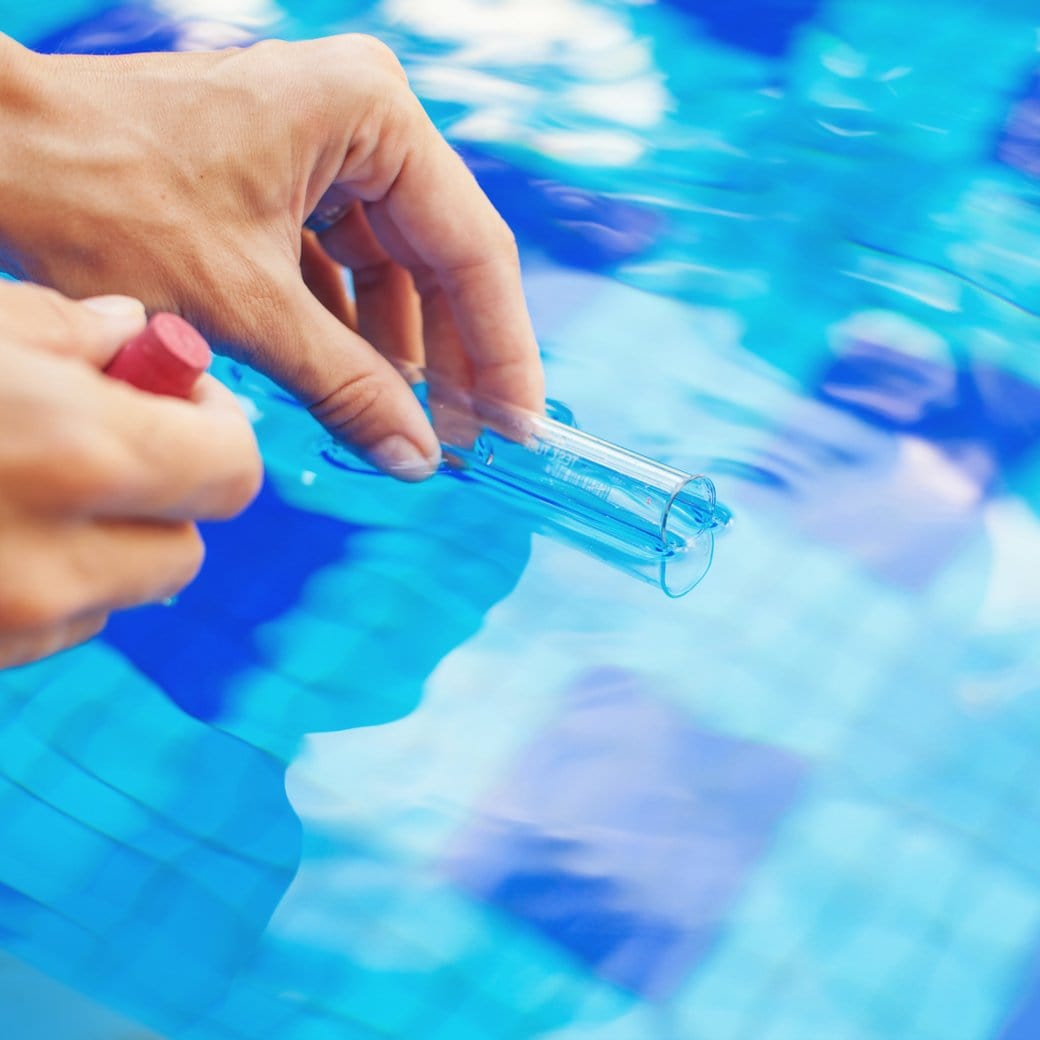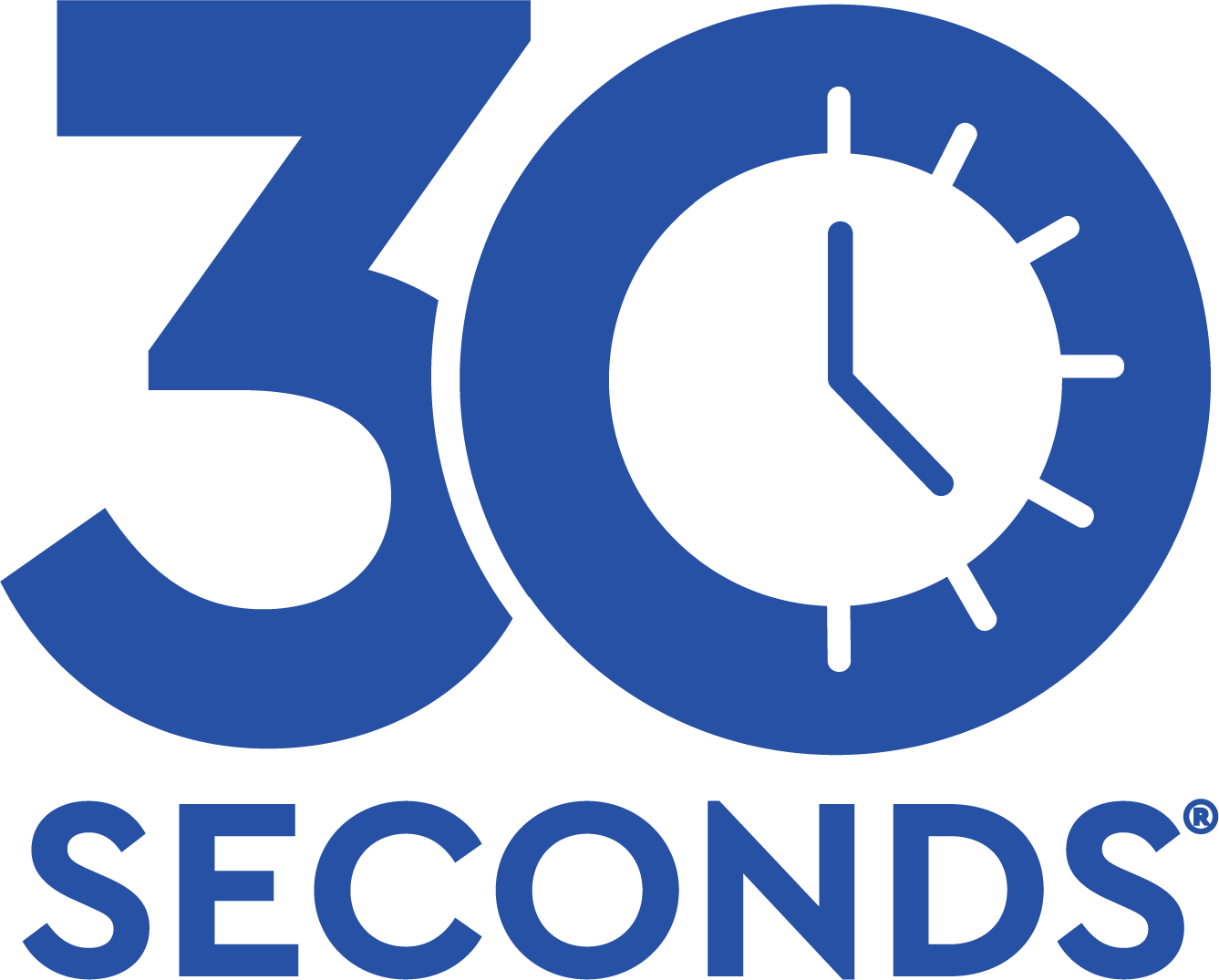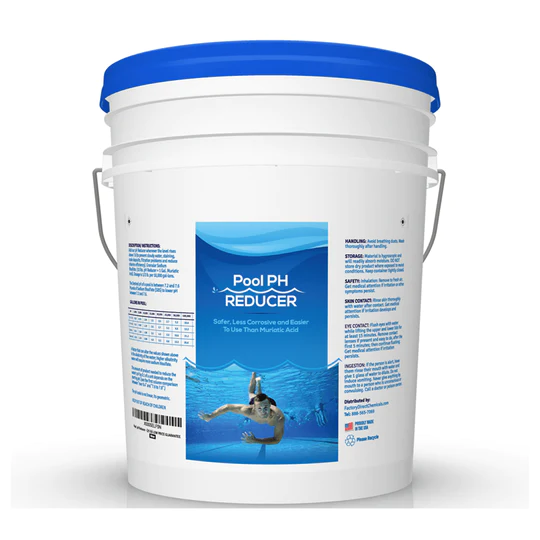Altering the pH of your pool reminds us of Goldilocks and the Three Bears. You don't want your pH to be too high or too low. If you need to incease or decrease the pH in your pool, we're here to help. Here’s what you should know about pool pH and how you can improve it without using splashy or toxic liquids.
Why does it matter if my pool’s pH is too high?
If your pool’s pH gets too high, it will impact the effectiveness of the other chemicals, particularly chlorine. Ineffective chlorine can increase the risk of:
- Waterborne illnesses
- Skin irritation
- Cloudy water
- Equipment damage
- Pool tile scaling
- Clogged filters and pipes
Your pool’s pH should be between 7.2 and 7.6. If you don't have one already, invest in a pool pH testing kit.
Why choose sodium bisulfate instead of muriatic acid?
When it comes to lowering pool pH, you’ve got options. So why choose sodium bisulfate over muriatic acid? Well, the granular substance offers a few important advantages over corrosive pool chemicals like muriatic acid.
It’s fast acting
You won’t have to wait long to see results with sodium bisulfate. The granular formula acts quickly and reduces your pool’s pH in just minutes. Just remember to turn on your pool so the granules disperse throughout the water.
It’s safer than muriatic acid
Muriatic acid can lower pH, but it’s extremely corrosive. It also creates toxic fumes. On the other hand, sodium bisulfate is non-toxic and safe for use around your family and pets. So if you have the option to use something else in your pool, you should, especially if you want to protect your children.
It’s easy to use
Compared to muriatic acid, sodium bisulfate is much easier to handle and measure. You can figure out exactly how much you need, and you don’t have to worry about splashback.




Using sodium bisulfate to lower pool pH
Here’s what you need to do to lower your pool’s pH levels using sodium bisulfate.
Step 1: Test your pH
There are a few ways you can test your pool’s pH — from test strips to liquid testing to digital testers. No matter what you use to test your pool, optimal pH levels should read between 7.2 and 7.6.
If your pH is really high, you might want to test your alkalinity too. High alkalinity often correlates with high pH.
Step 2: Measure sodium bisulfate
Using sodium bisulfate is easy. All you need to know is how many gallons your pool holds then follow your pH reducer’s directions listed on the label. Here’s an example chart:
Once measured, simply pour the granular formula directly into the pool. Turn on your pool so the granules are evenly distributed. Don’t have a pool pump? No problem. Just use a paddle to circulate the water yourself.
Step 3: Give your pH decreaser time to work
While it works fast, sodium bisulfate doesn’t work instantly. Give the formula time to distribute evenly throughout your pool.
Step 4: Test pH levels again
After a couple of hours, test your pool’s pH. If your pool’s pH isn’t in the optimal range (7.2 to 7.6), you’ll have to make some small adjustments.
Sodium bisulfate granular formula is an easy way to decrease the pH in your pool pool. The best part about it is that it is safe for use around your family and pets, unlike some of the other options out there. Stay vigilant and check your pH levels often in order to make this summer pool season one that your whole neighborhood will enjoy.




















